We invite you to discover Varanasi, the popular holy city located on the banks of the Ganges River in northern India. With a thousand-year history, Varanasi is recognized as one of the oldest and most sacred cities in the world.
Its ghats, temples and spiritual rituals along the river offer a unique experience for travelers seeking a deep contact with spirituality and tradition. Varanasi invites you to immerse yourself in a mystical atmosphere and witness religious fervor in a setting full of history and meaning.
A ghat is a staircase leading to a river, pond or lake, and can be used for sacred ceremonies or for the daily hygiene of city dwellers.
In the case of Varanasi, its most important body of water, the Ganges River, has a very special meaning for Hindus, who make pilgrimages to this city to purify themselves (despite the visible pollution, which poses a threat to both humans and animals) in one of its more than 60 ghats.
When someone dies, a cremation ceremony is performed at the foot of a ghat and on the banks of the Ganges, and, in this way, salvation is guaranteed.
October to March is the best time to visit Varanasi. The pleasant winter months are the perfect time to explore the city.
We know that the subject of visas can be somewhat confusing, especially for India, where obtaining one is an essential requirement for entry. In the article on how to obtain an Indian visa step by step (coming soon) you have information on how to apply for one online for up to 5 years.
It’s essential to travel to India with comprehensive insurance. We were among the first to offer the popular IATI discount, and you can now get it with Heymondo Travel Insurance as well.
You can find more information about both companies through the links provided above, or you can access the discount directly using the buttons below (in both cases, you’ll see the reduced final price on their website):
While many hotels, guesthouses, and restaurants in India offer free Wi-Fi, some travelers prefer or need a constant connection. We’ve included details on obtaining a eSIM India card with unlimited data (from Holafly) or with fixed data but cheaper (from Saily).
If you want to get it directly, here’s the link (with a discount) for both companies:
As in many other cities in India, the train is one of the best options. There are connections from the main cities in India such as Delhi, Mumbai, Agra or Calcutta, from where trains arrive at any of the three stations in Varanasi.
You can check out our article on trains in India with all the info you need about sleeper or 3rd class trains, and we’ll leave here some links to the most popular trains to get to Varanasi. We highly recommend you book well in advance, as they fill up very quickly:
To get to Varanasi from other cities in India, there are several bus services. There are also many visitors who make the journey from Nepal with two options, transferring at the border with different companies or a single journey from Kathmandu.
Lal Bahadur Shastri Airport (VNS) is located just 25 km from the city and has connections from major Indian cities such as Delhi, Mumbai, Kolkata, and Hyderabad, as well as some international connections such as Bangkok and Colombo. Here are some flight deals to Varanasi (Benares) from Bangkok.
Of all the ghats in Varanasi, Dasaswamedh Ghat is, along with Manikarnika (the most important for cremations), the one that attracts the most spectators. This ghat, which name means that Brahma “sacrificed 10 horses”, is transformed, every day of the year at 7:00 p.m., into a Ganga Aarti ceremony with puja (offering), fire and dance.
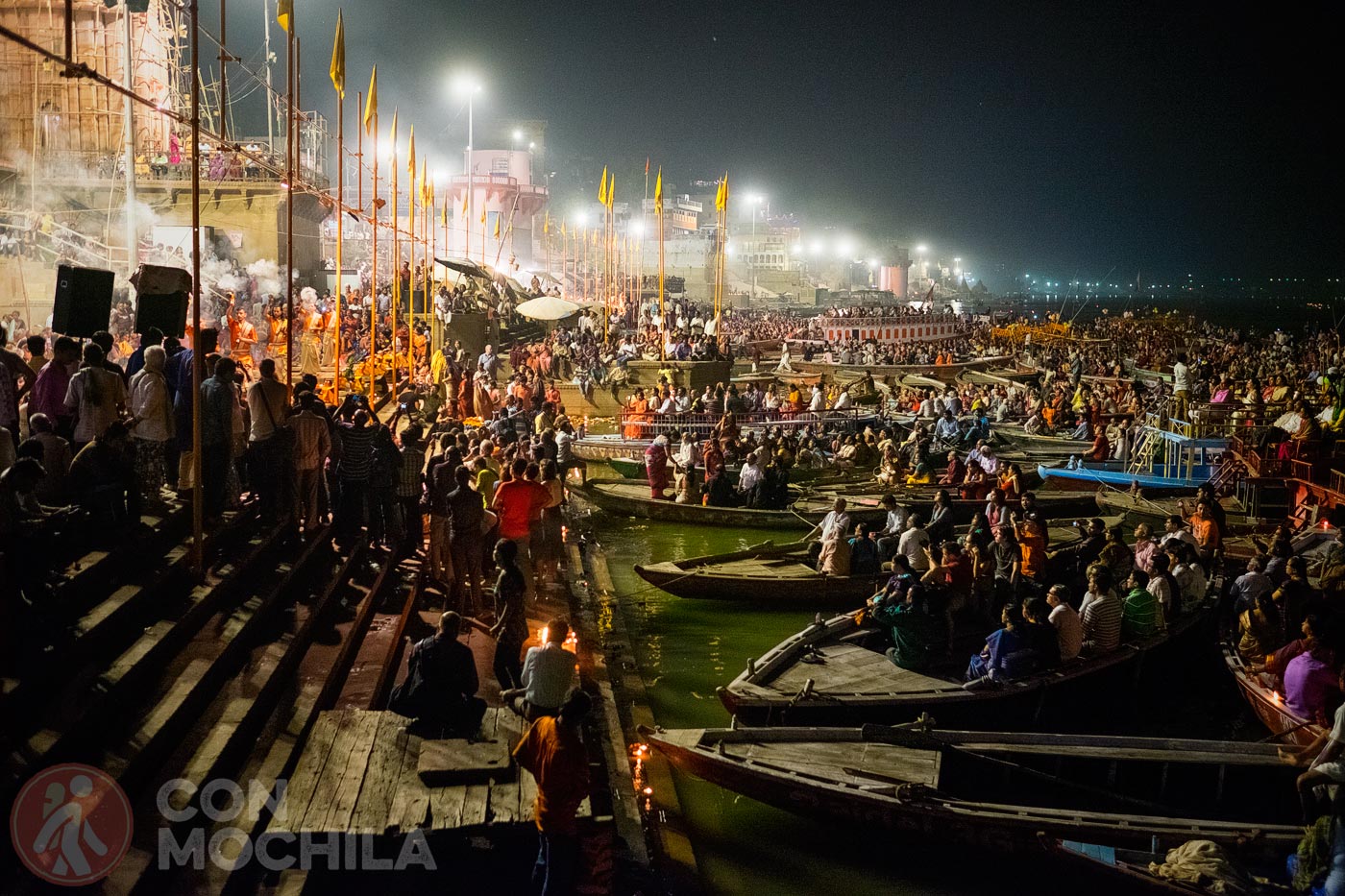
The smell of incense and the colors are the first things you notice as you walk down the stairs and join the crowd who enjoy the event with solemn respect.
Manikarnika Ghat is one of the holiest cremation ghats on the entire Ganges, and also one of the oldest, said to have been built in the 5th century. Many Hindus make a pilgrimage here in their final days to receive moksha after they have passed away.
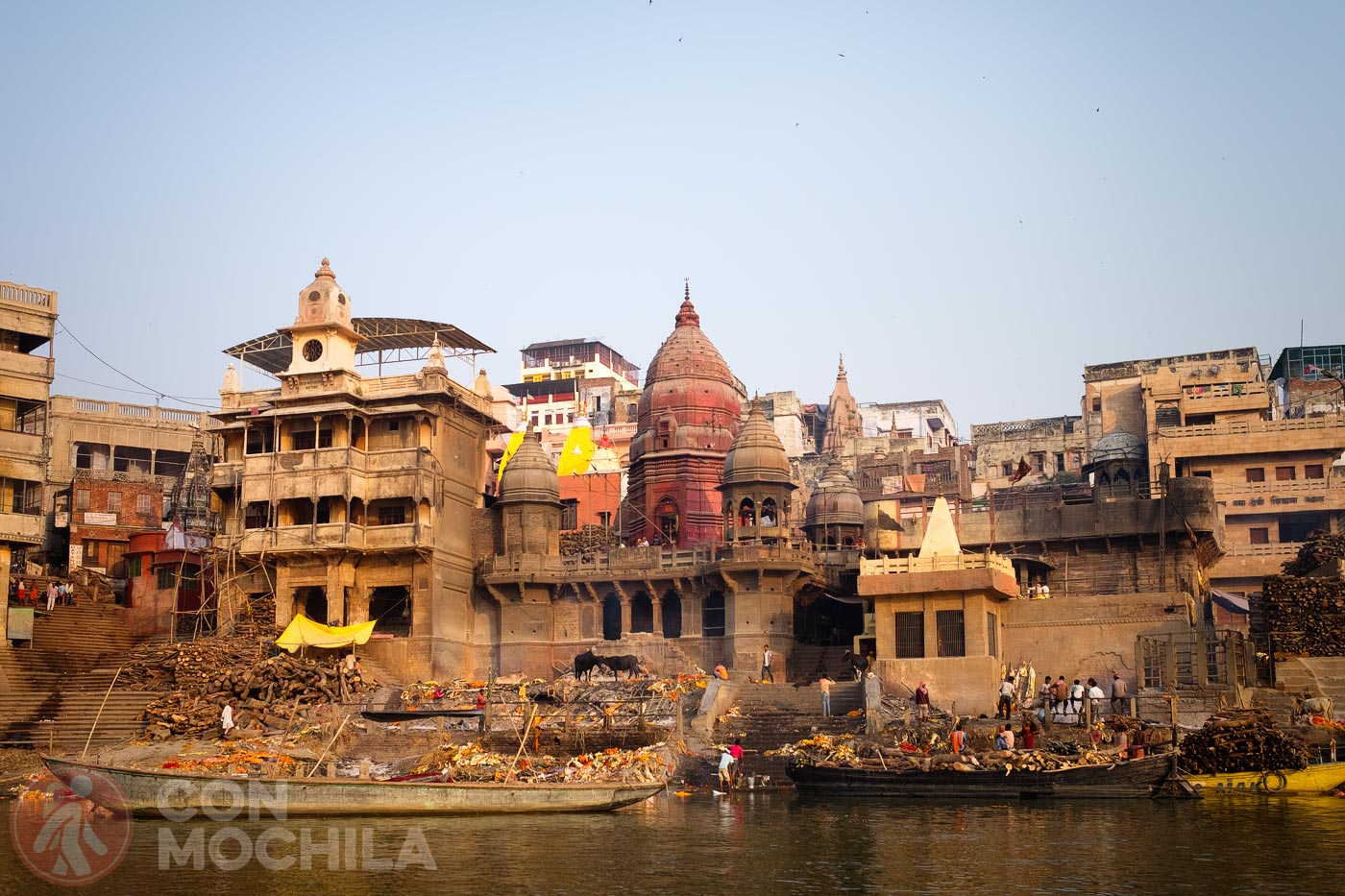
During the afternoon, funeral pyres are formed and the bodies of those to be cremated are lowered. It is not a ceremony for everyone and out of respect for the families no photos should be taken.
They say that the goddess Durga (Shiva’s consort) threw her sword into the Assi River after killing the demon Shumbha-Nishumbha, and it is there, at the confluence of the Assi River with the Ganges, south of Varanasi, where the Assi Ghat was built.
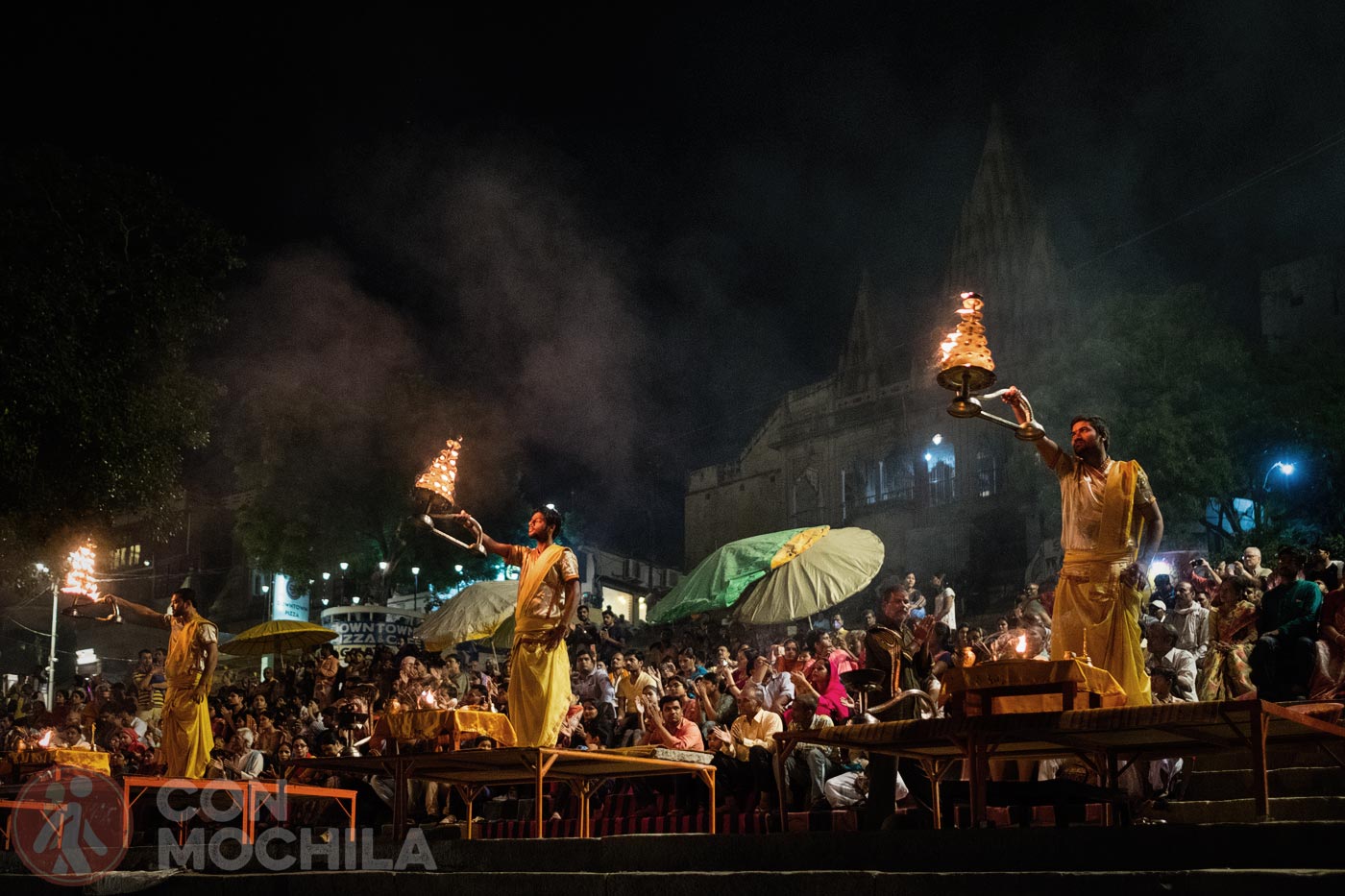
This ghat is visited by many curious people, both tourists and locals, to watch the puja that takes place every afternoon in front of the sacred Ganges River.
Originally called Someswara, when Maharaja Man Singh built his palace in the 16th century, the ghat was renamed Man Mandir Ghat. It is considerably quieter than its neighboring ghat, the Dashashwamedh, and is in good condition compared to other ghats in Varanasi.
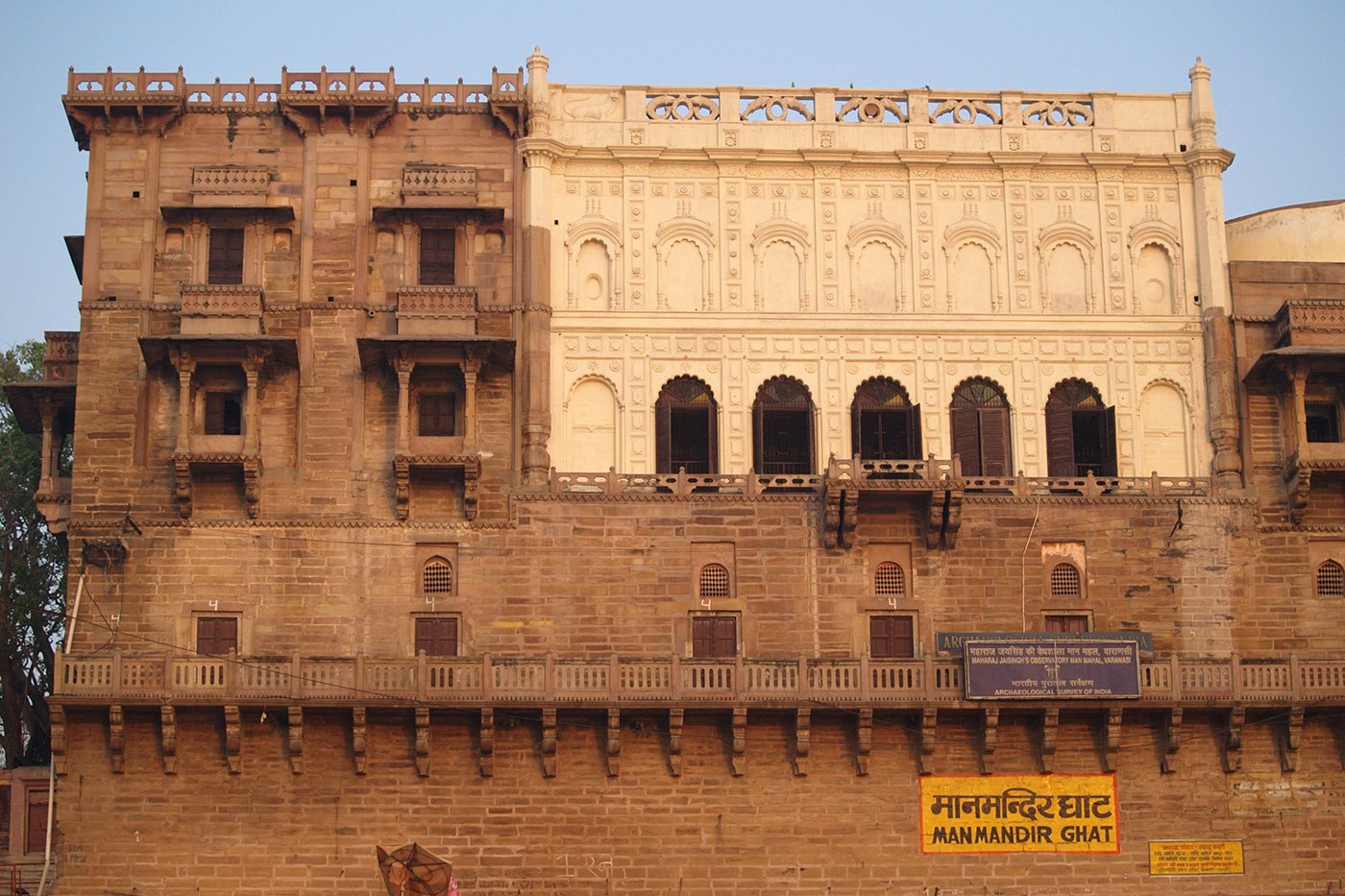
Its balconies and exterior walls contain many details and ornamentation. On its terrace, in the 18th century, Jai Singh II built an observatory, Jantar Mantar, which can be visited today, and also offers beautiful views over the city.
Built as a small fortress in the 17th century, Ghat Chet Singh was built by the Maharaja of the same name, who made it his habitual residence. In this way, he was able to fight against the English troops and defend his life after several conspiracies, although he finally lost the battle.
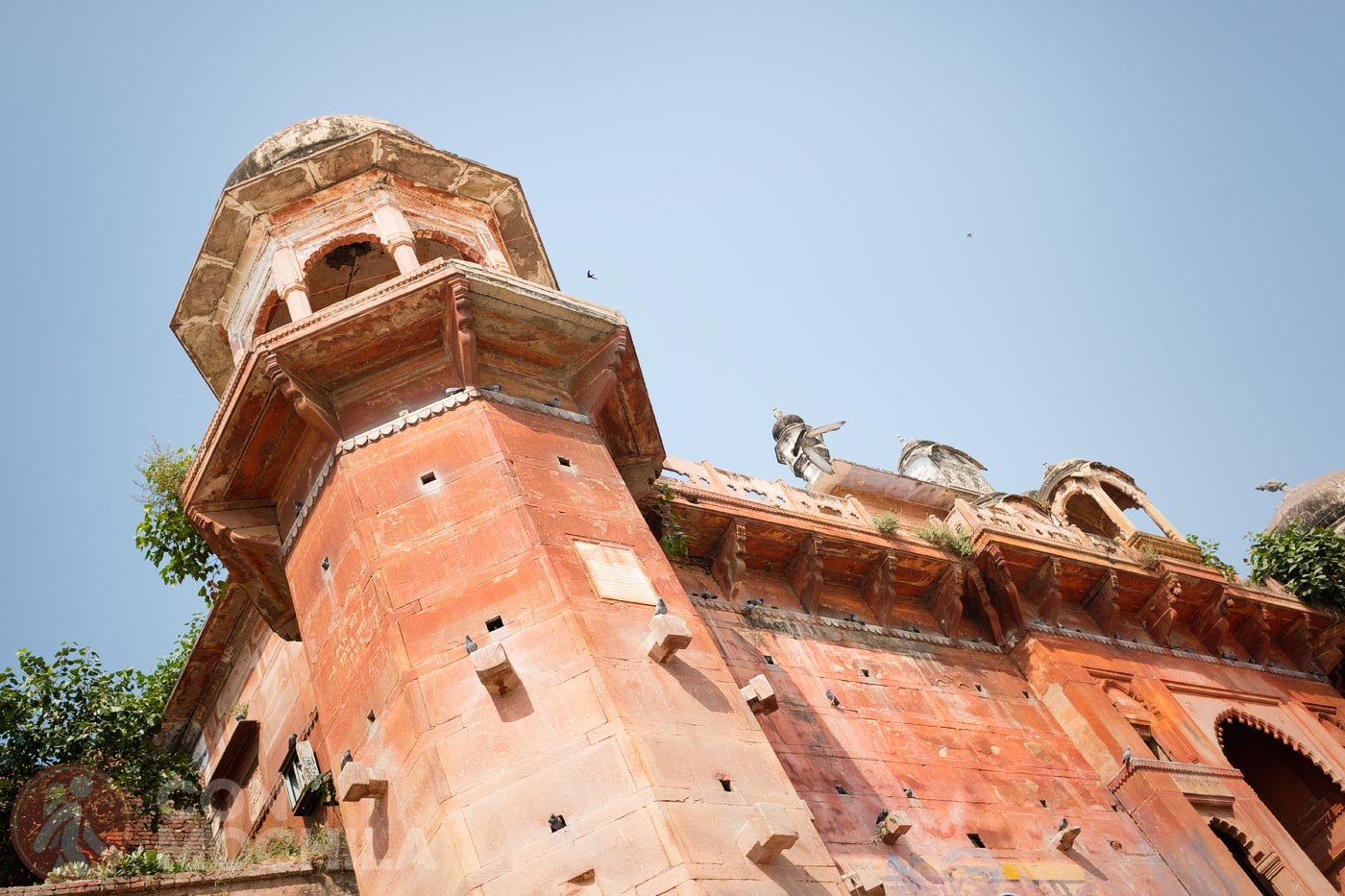
Originally, the ghat contained three pavilions, a terrace overlooking the Ganges, buildings (now gone) for women, and a Mughal garden.
Named after Sridhar Narayan Munshi, a minister of Nagpur state, Munshi Ghat is one of the most striking ghats in Varanasi. In 1915, it was renamed Darbhanga Ghat by the Brahmin king who bought and developed it into what it looks like today.
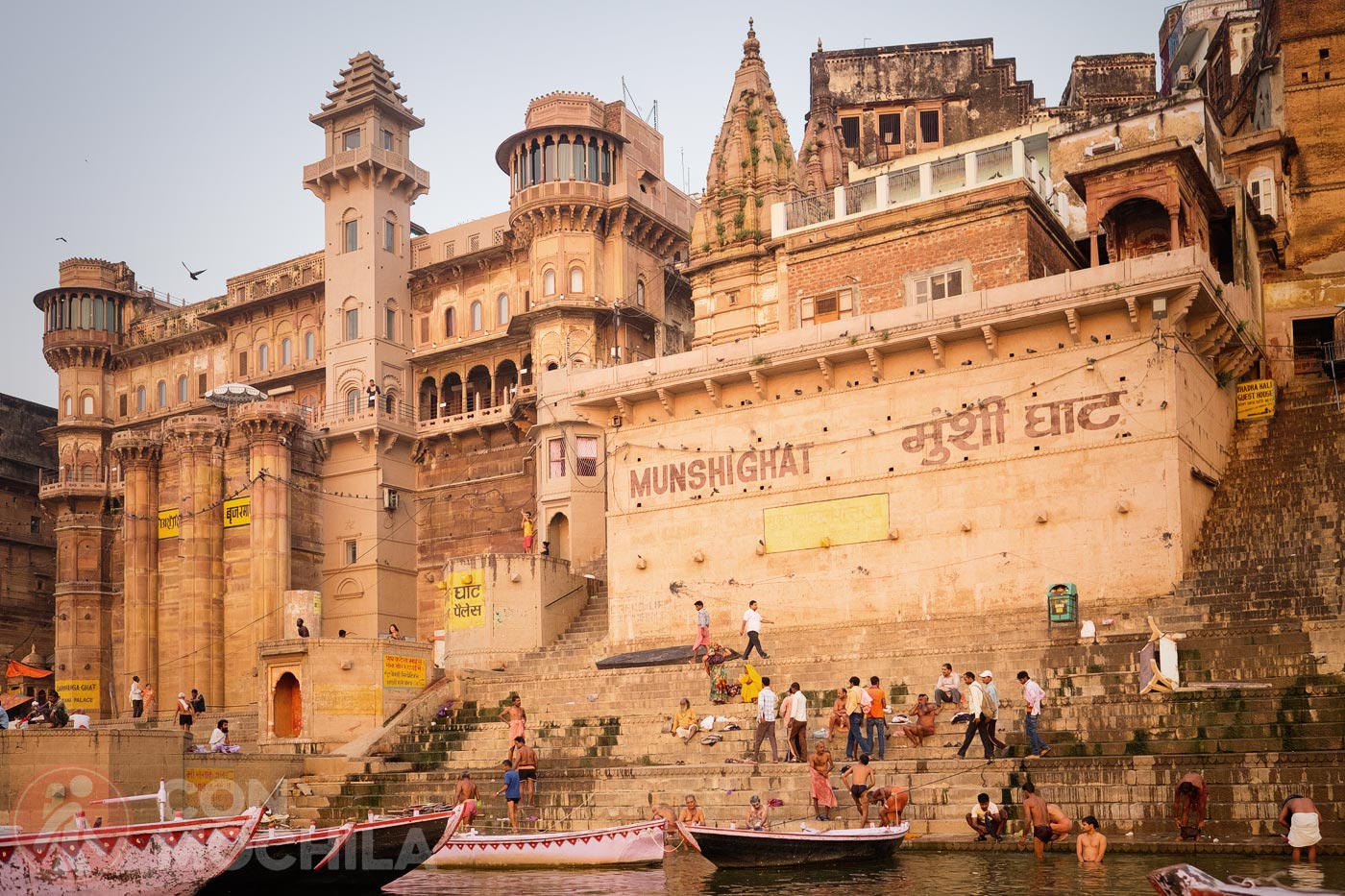
Its architecture is a mixture of styles, and features numerous porches and Greek pillars in sandstone. Today it is called Brijrama Palace and belongs to a hotel chain, a change that was somewhat controversial at the time, as part of the palace was destroyed.
The Kashi Vishwanath Temple, dedicated to Shiva and also known as the Golden Temple, was built and destroyed numerous times since it was first erected before the 13th century and the structure we see today was created in 1780 by Maharaja Maharani Ahilyabai.
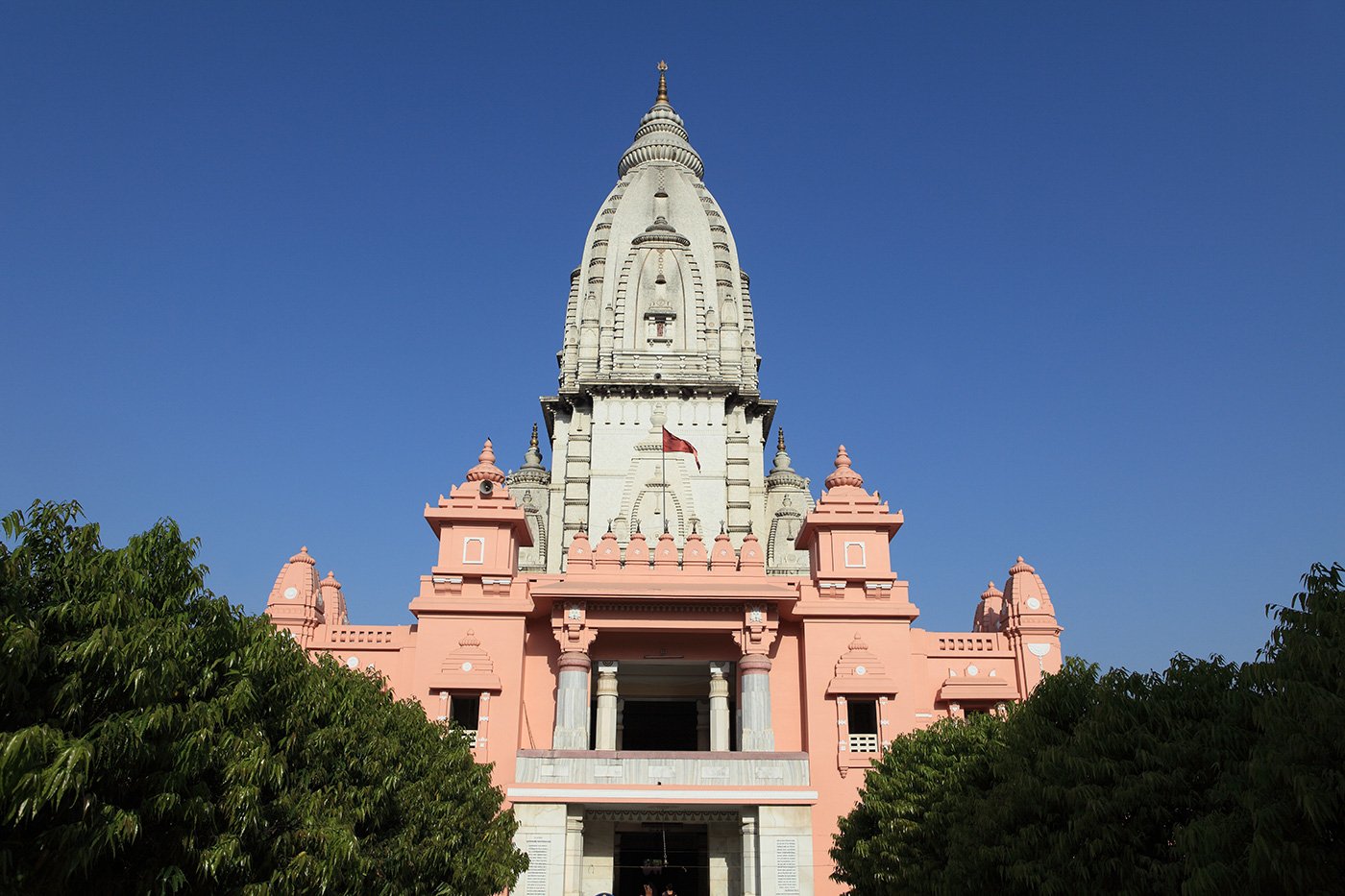
Located next to the Ganges, worshippers visit the temple and bathe in the river as a path to attaining moksha or enlightenment.
About 13 km from Varanasi, in Sarnath, we find this immense stupa built in 500 AD on the remains of previous stupas dating back much earlier. It is said that Buddha visited this area and, after attaining enlightenment, he gave his first sermon to a handful of disciples.
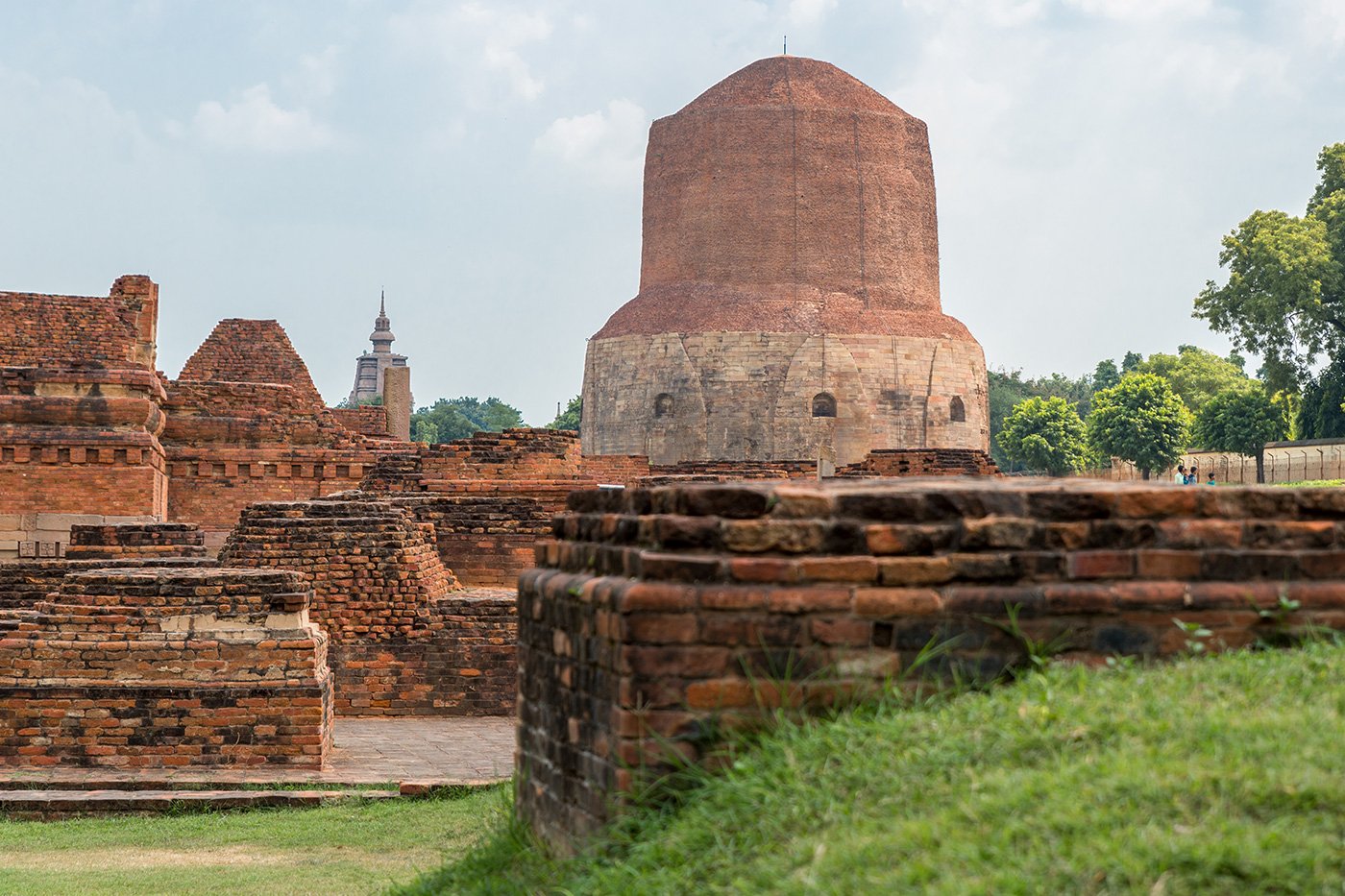
The Dhamek Stupa, made of red brick and stone, was built to commemorate these activities. If you look closer, you can find carvings on the stone with human and animal figures on the cylindrical structure, some 28 meters in diameter and more than 43 meters high.
Also in Sarnath and about 13 km from Varanasi, the red brick Chaukhandi Stupa stands on a hillock, surrounded by terraces, and is one of the first structures you see upon arriving at Sarnath.
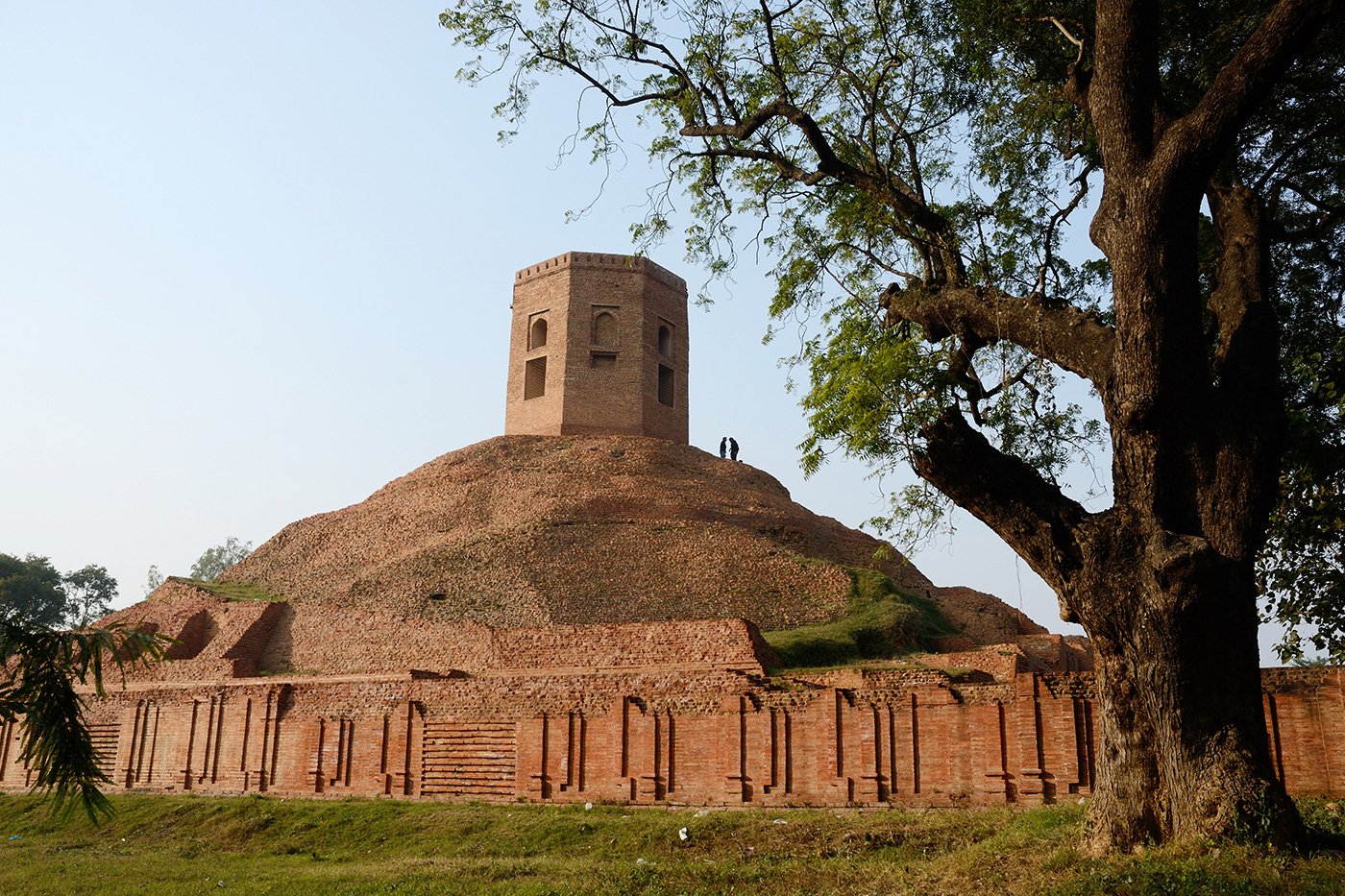
Its octagonal tower follows the Mughal architectural style, and is said to have been built by Akbar, the son of the Mughal Emperor Humayun, to commemorate his father’s visit to the area.
Like so many other religious structures throughout history, the Gyanvapi Mosque was built by a Mughal emperor on the ruins of a Hindu temple in the 17th century. Remnants of this ancient temple, which some say was the original version of Kashi Viswanath, can still be seen on the walls of the mosque today.
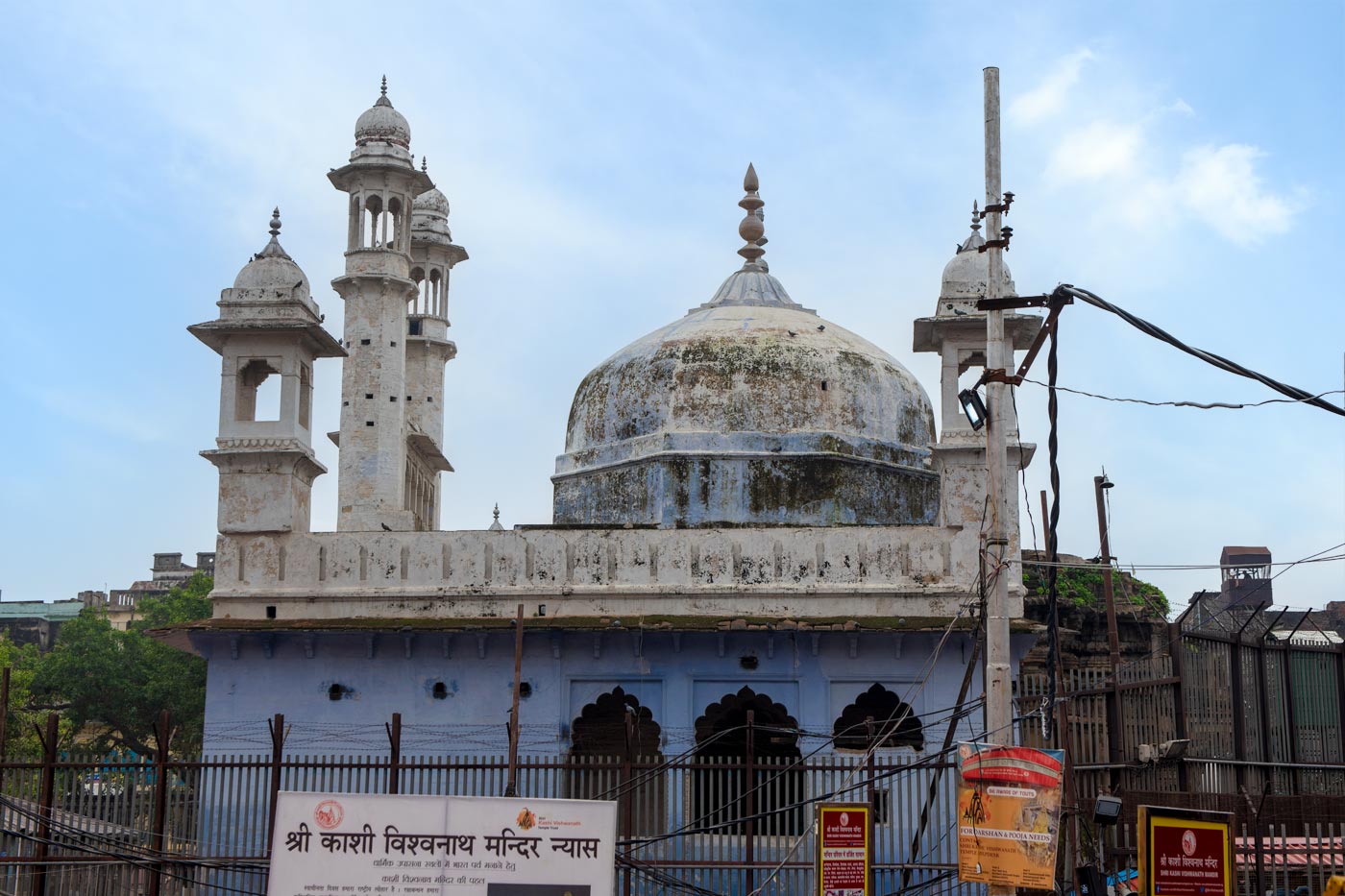
Inside we find a fountain, and it is said that the water that flowed out was even more sacred than that of the Ganges itself.
White and immaculate, this Hindu temple welcomes us, famous because it was here where it was built in 1964 (ordered to be built by a local family), where the poet Goswami Tulsidas wrote one of the epics of Hinduism in the 16th century.
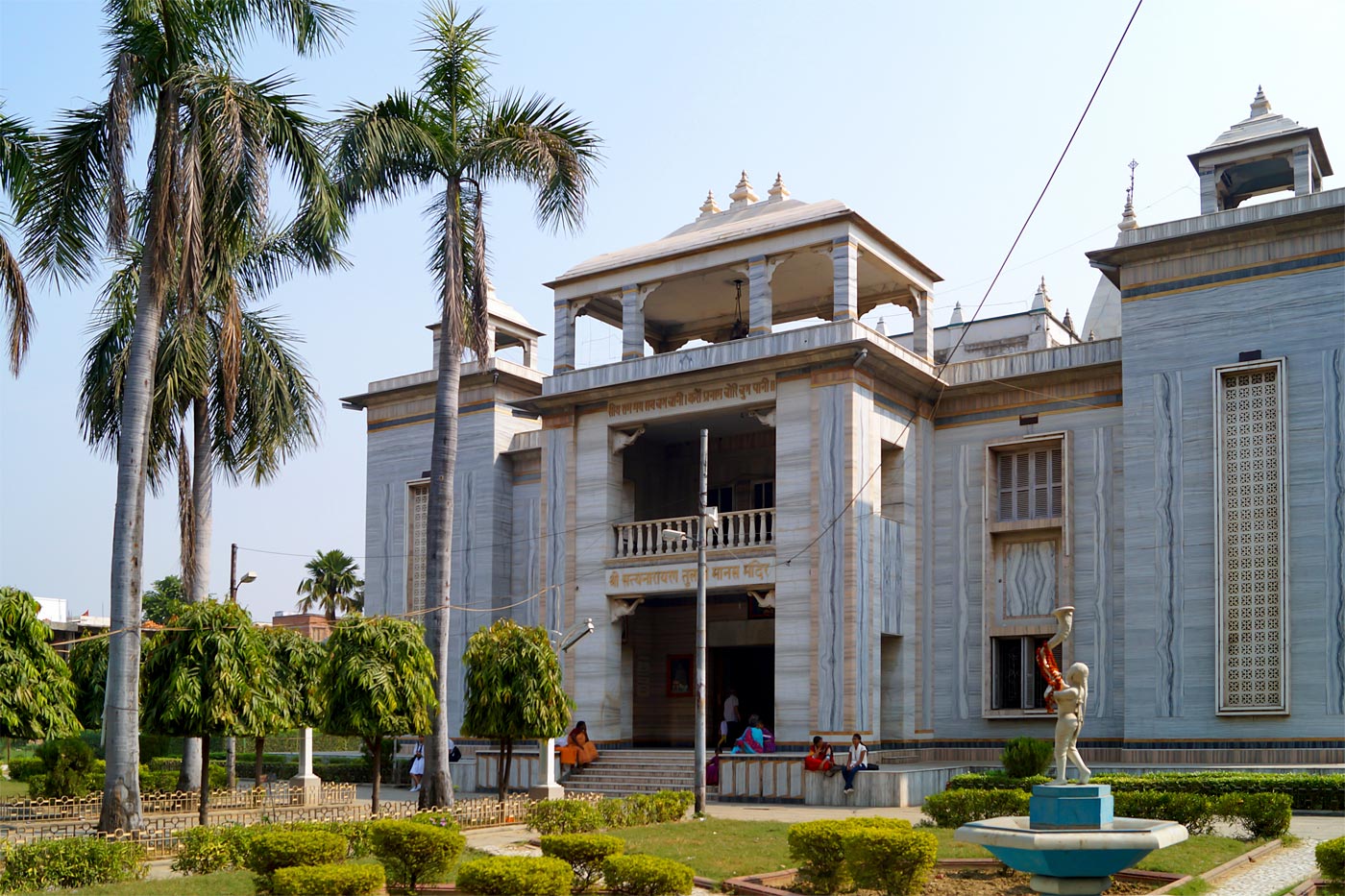
This epic describes the story of Rama and, for this reason, Tulsi Manas is dedicated to this deity, although it also contains images of Ram, Sita, Lakshham and Hanuman. Walking through its interior, we will find a garden and four ghats.
If Tulsi Manas welcomed us in immaculate white, the Durga temple or Durga Mandir do the same but in red and ochre. Dedicated to the goddess Durga, representative of power and strength, it was built in the 18th century and has striking carvings inside, as well as the typical towers (sikharas) of cone-shaped Hindu architecture.
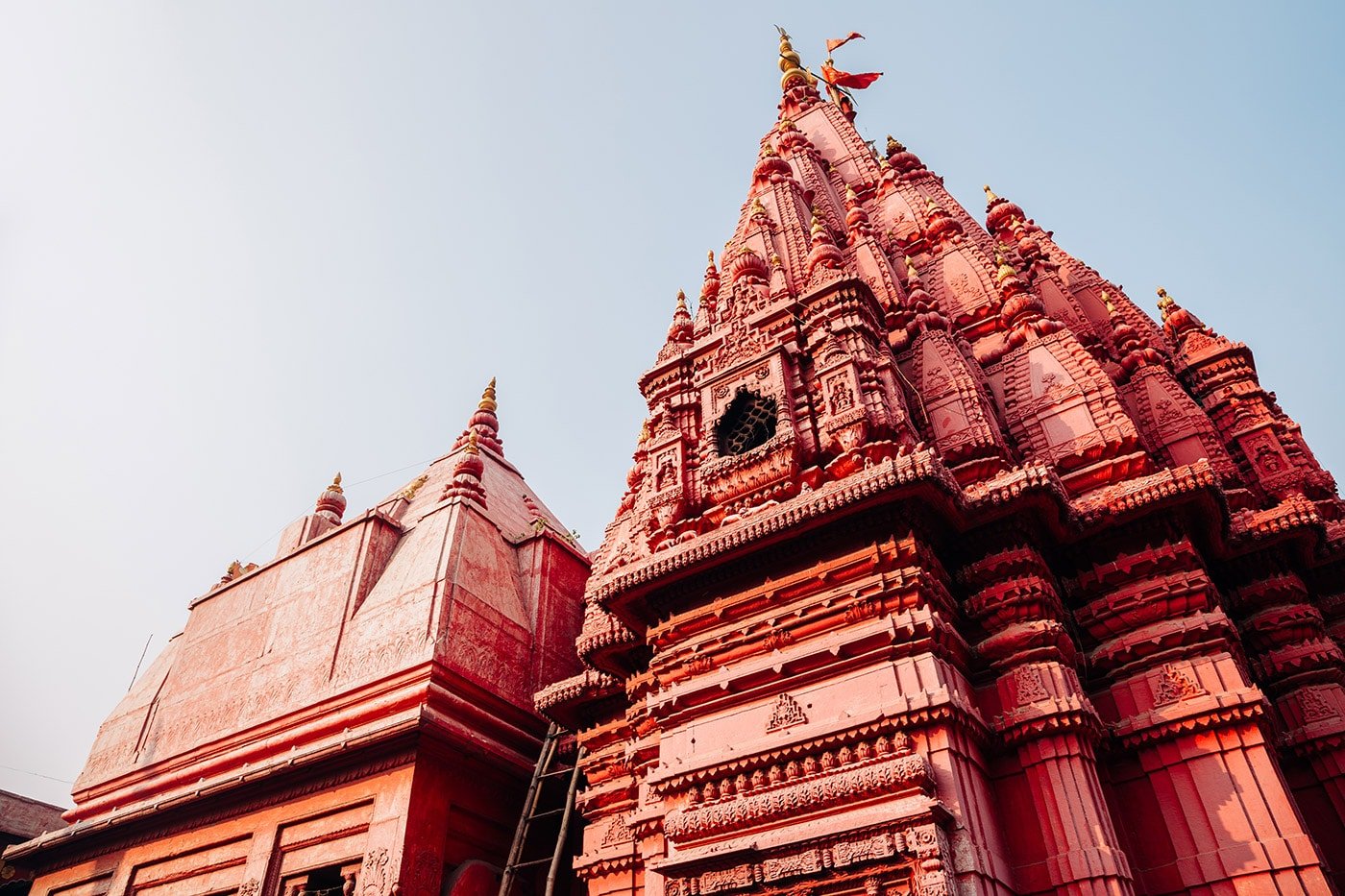
Legend has it that the image of Durga was not created by the hand of man, but rather appeared in the temple on its own.
Bangali Tola Rd is a narrow street, no more than 3 meters wide in some parts, a coming and going of people, shops, cows, dogs, monkeys, motorbikes, monks, sadhus, tourists, smells, music and noises, in short, sensations. If you are a photographer or you like photography, walking down this street at night is a delight for anyone.
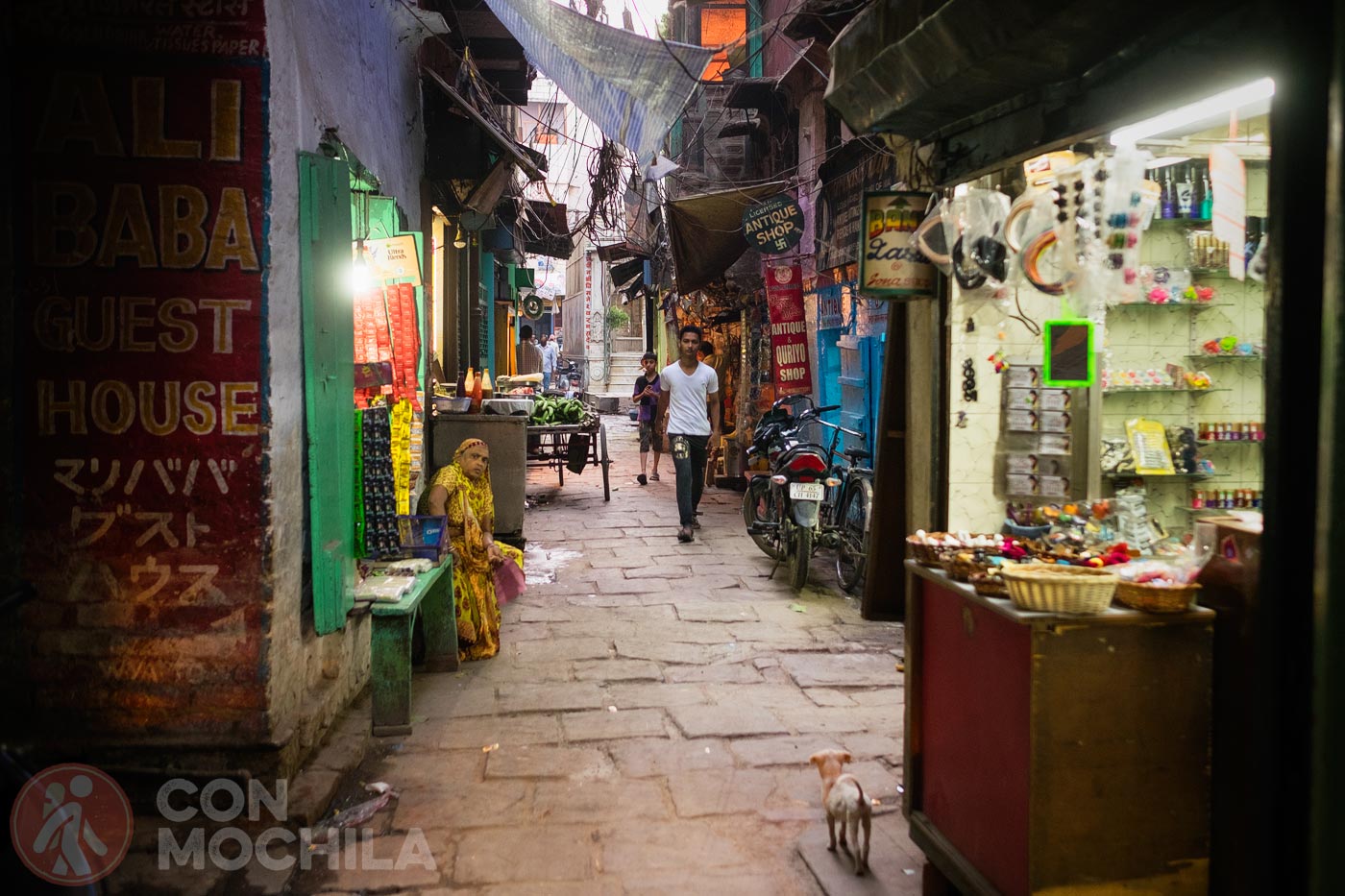
Every night is different from the last, and finding the moments is just a matter of patience. You won’t be able to go 1 minute without pressing the shutter, because everything will attract you.
Showing its decay, we are greeted by the Ramnagar Fort on the other side of the Ganges. This impressive fort, built in sandstone in the 18th century by the Maharaja Balwant Singh, is now inhabited by the current Maharaja of Varanasi, Pelu Bhiru Singh.
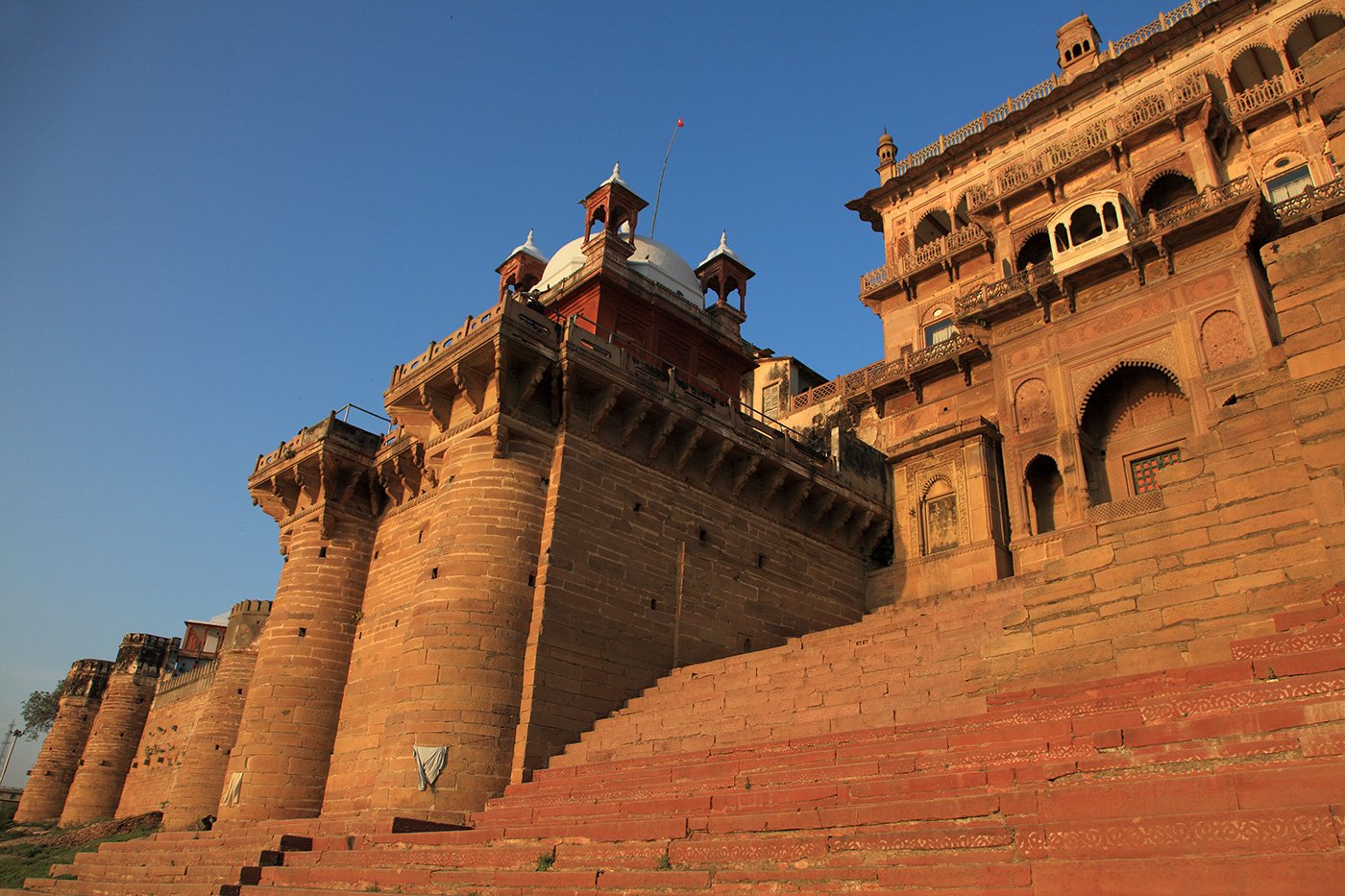
Mughal in style, its carved balconies, terraces and pavilions are only open to the public, as is the museum, which houses various eccentric artifacts, as well as manuscripts and an astronomical clock.
During the 18th century, Maharaja Sawaii Jai Singh II built five astronomical observatories in India. Known as Jantar Mantar, these are buildings of various and curious shapes, each with a specific function.
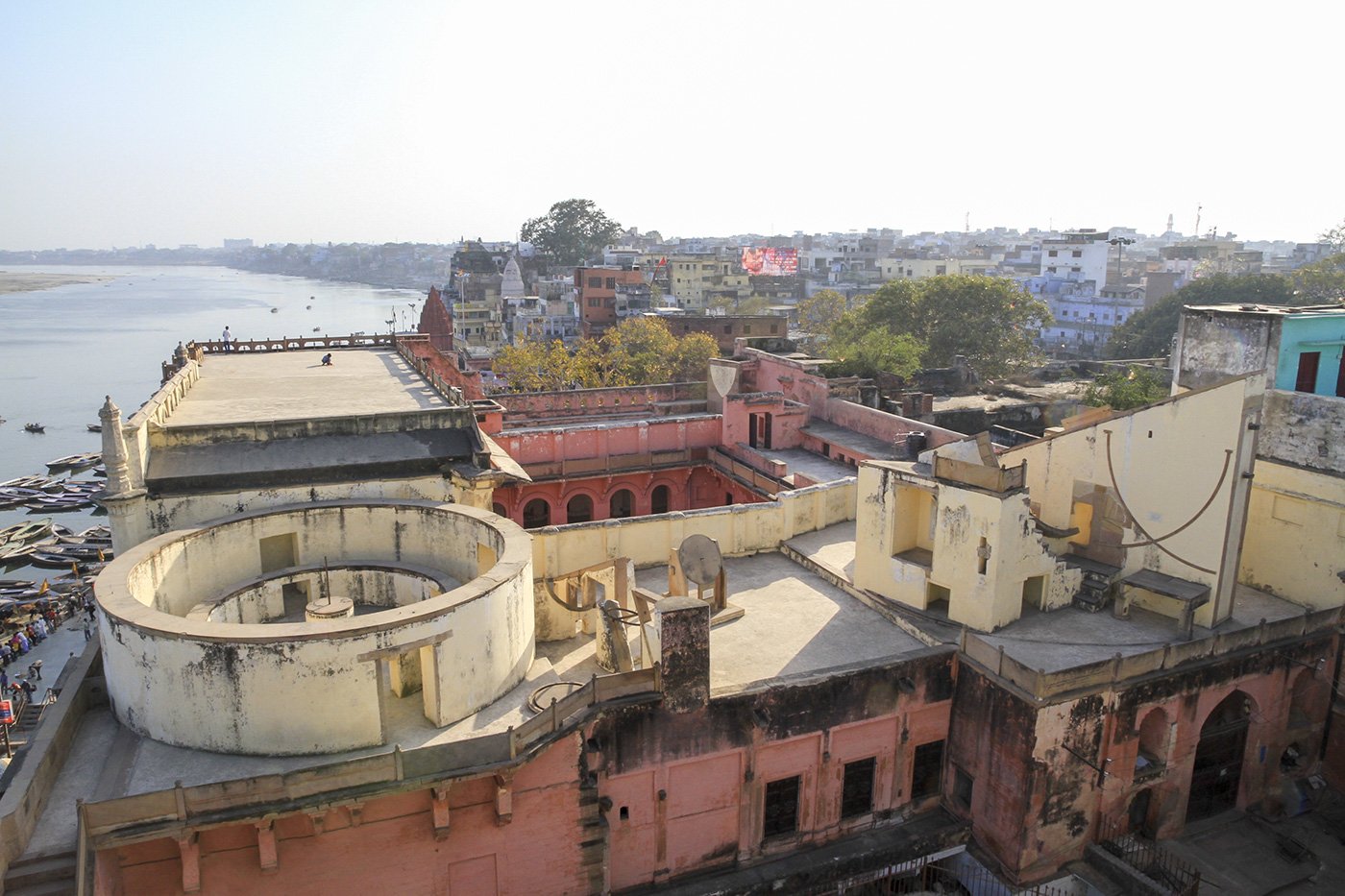
The Jantar Mantar observatory in Varanasi is located very close to Dashashwamedh Ghat, on the roof of the Man Mahal palace, and was built with the intention of accurately understanding the movement of planets and stars, as well as predicting eclipses.
You have a Full Day City Highlights Day Tour & Ganges Cruise accompanied by a guide to explore and discover the most interesting areas of the city.
The sunrise in Varanasi is a real spectacle. Let yourself be enchanted by its colors during a boat ride and enjoy the Aarti ceremony, a ritual that will leave you speechless.
Do you want to travel to the place where Buddhism began? A private tour to Sarnath is the best way to learn how this religion was born and explore one of its holy cities.
Whenever we go to Varanasi we usually choose a couple of areas to stay, one more to the north and full of people near the Dashaswamedh ghat, and a quieter one, towards the south, around the Assi ghat. Both places celebrate, every afternoon, the Ganga aarti, the sacred pujas to the Ganges river.
If you want to spend between $6 and $14, there are a few places that offer good value for money, such as:
All of them have favorable reviews. You can book them at the best price at the links above.
However, we discovered Ram Bhawan Residency, located in a well-restored old house, with breakfast and vegetarian meals included. It is a bit more expensive than the previous ones and is usually full, so it is better to book in advance. An interesting thing is that it was there that we conducted the second interview with Nando Baba.
If you want to treat yourself, you can book a room at the BrijRama Palace, built in the 18th century on the banks of the Ganges.
This area located towards the south is much quieter than the previous one, and for prices of up to $13 you can stay at Banaras Paying Guest House.
Between these two areas you can stay at HosteLaVie (between $17 and$ 22), a nice place with very good reviews.
The streets of Varanasi are often narrow and, in order to see all the ghats and the area near the Ganges, it is best to travel on foot. If you are going a little further or want to go to the Sarnath area, you can negotiate with an auto-rickshaw driver for the round trip.
Click on the image and it will take you to a new Google Maps window with all the points of interest to travel around Varanasi.
ACTIVE CAMPAIGN !
Until december 1st, you can get an automatic 15% discount on your Heymondo travel insurance.